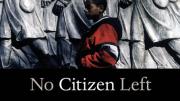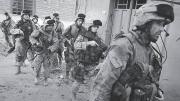Glock: The Rise of America’s Gun, by Paul M. Barrett ’83, J.D. ’87 (Crown, $26). A veteran journalist profiles the making and marketing of a simple, lethal weapon—the gun used in the shooting of Congresswoman Gabrielle Giffords and others in Arizona.
Strategic Vision: America and the Crisis of Global Power, by Zbigniew Brzezinski, Ph.D. ’53 (Basic Books, $26). The former national security adviser reminds those dubious about the effects of American hegemony that in a twenty-first-century world “now almost everywhere politically awakened,” a stable global order still “ultimately depends on America’s ability to renew itself and to act wisely.”
Mozart at the Gateway to His Fortune, by Christoph Wolff, Adams University Professor (W.W. Norton, $27.95). The formidable Bach scholar reinterprets Mozart’s final years, during his service to Emperor Joseph II of Austria, citing the “forward-looking drive” of his music at a period long presumed to be shadowed by his impending death.
Capitalism at Risk: Rethinking the Role of Business, by Joseph L. Bower, Herman B. Leonard, and Lynn S. Paine (Harvard Business Review Press, $29.95). Three Harvard Business School professors find business leaders worried about the capitalist system. They challenge businesses to look beyond their firms’ traditional roles and to take on as business challenges systemic problems (healthcare, environmental quality, income inequality) that have traditionally been left to governments. The U.S. Competitiveness Project (www.hbs.edu/competitiveness) makes similar points.
Searching for Utopia: Universities and Their Histories, by Hanna Holborn Gray, Ph.D. ’57, LL.D. ’95 (University of California, $39.95). The president emerita of the University of Chicago and former Harvard Corporation member used her 2009 Clark Kerr Lectures on Higher Education, now published, to argue for “stripped down” universities: “leaner, more selective in aspiration and more focused in purpose,” and less homogeneous in their aims.
Moral Origins, by Christopher Boehm, Ph.D. ’72 (Basic Books, $27.99). As that snake and apple on the jacket suggest, the author, professor of anthropology and biological sciences at the University of Southern California, is after a Darwinian explanation of what the subtitle calls “the evolution of virtue, altruism, and shame.”
Representing the Race: The Creation of the Civil Rights Lawyer, by Kenneth W. Mack (Harvard, $35). Professor of law Mack (a J.D. ’91 classmate of Barack Obama), a legal historian (he is also a Princeton Ph.D.), portrays the African Americans who took on segregation while dealing with the tension between their professional and personal identities, and the lingering issues of authenticity.
Paris in Love, by Mary Bly ’84, writing as Eloisa James (Random House, $26). If you cannot spend your spring in Paris this year, you can go, vicariously, via the author’s infatuated, episodic memoir of a sabbatical year with her family.
No Citizen Left Behind, by Meira Levinson, RF ’03 (Harvard, $29.95). From her teaching experience in an all African-American school in Atlanta, the author, an associate professor of education, came to perceive a civic-empowerment gap as powerful and debilitating as the urban academic-achievement gap. She prescribes activist civic education.
How To Be Black, by Baratunde Thurston ’99 (HarperCollins, $24.99). The author—an editor at The Onion, stand-up comedian, and co-founder of the Jack & Jill Politics blog (“a black bourgeoisie perspective on U.S. politics”)—lays out a tongue-in-cheek, autobiographical guide to the ways race is perceived, constructed, and acted out in America.
The Ivy League, by Daniel Cappello ’99 (Assouline Publishing, $65). “What is it about the Ivy League that makes it so intriguing, so appealing, so butterflies-inducing?” the author asks, in an album of stock photos, with his accompanying brief meditations on the distinctive character of each school in the Ivy brand.









